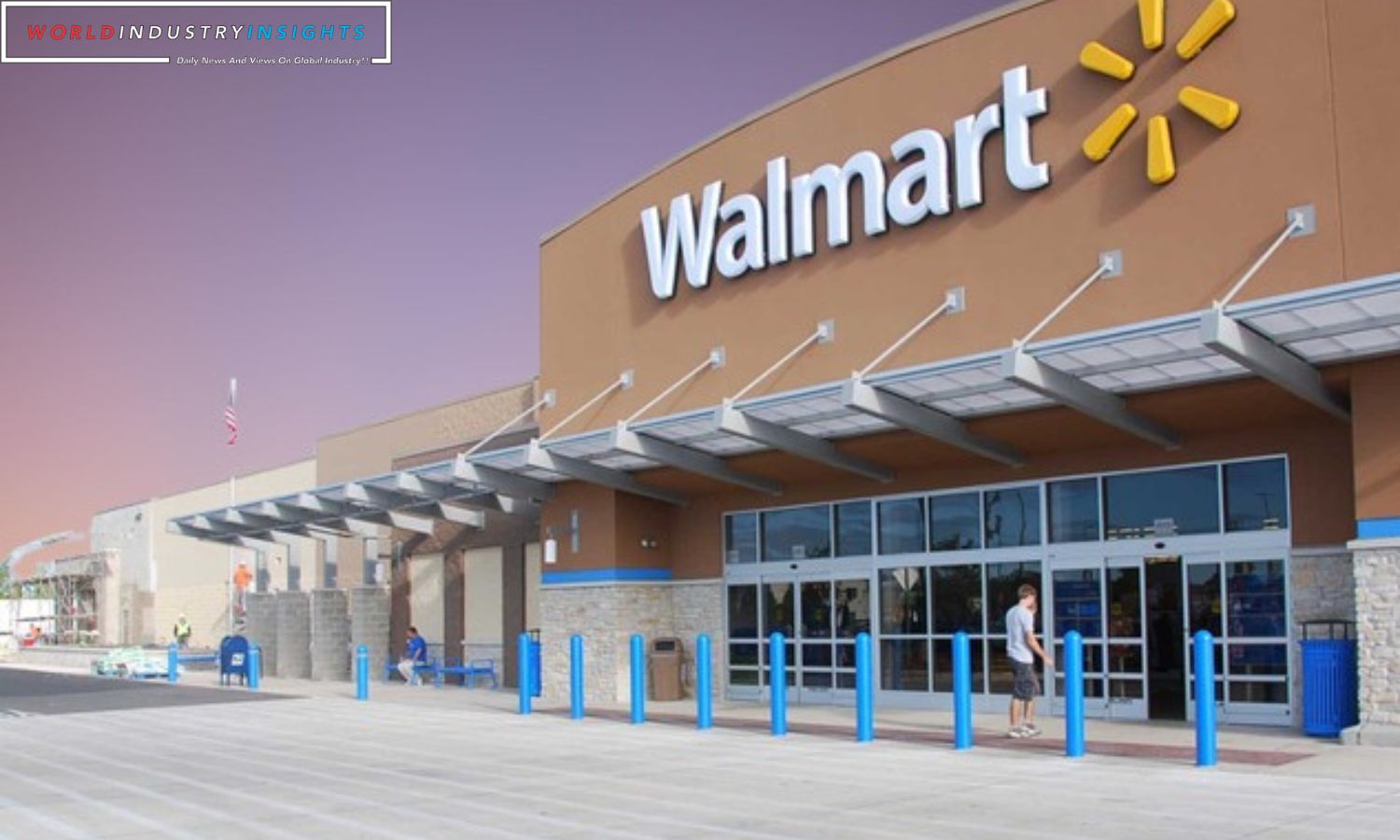Walmart Navigates Economic winds: Walmart (WMT.N) is treading carefully through the current landscape of consumer spending as the holiday season kicks off, facing the headwinds of rising interest rates and dwindling household savings. While the retail giant has adjusted its sales and profit forecasts for the year, signaling a mix of optimism and market challenges, its shares saw a 7.7% dip as executives acknowledged the impact of economic factors.
The cautious consumer sentiment, attributed to higher interest rates and reduced household savings, has resulted in what Walmart executives described as “somewhat uneven” sales over the past two months. Despite the challenges, Walmart’s strategic focus on groceries, comprising over half of its merchandise, has provided a shield against the broader slowdown in discretionary spending.
John David Rainey, Walmart’s Chief Financial Officer, noted a discernible slowdown in purchases during the latter part of October. However, a rebound was observed in early November, particularly in categories such as apparel and home goods that had faced challenges throughout the year. This dynamic consumer behavior prompted a more cautious stance from Walmart as it navigates the fluctuating economic conditions.
Walmart’s emphasis on groceries has proven to be a stabilizing factor, offering resilience amid economic uncertainties. With consumers exercising discretion in their spending decisions, the retail giant acknowledges the need for caution. While shopper visits increased by 3.5% in the third quarter, consumers remain selective and are waiting for promotional events like Black Friday and Cyber Monday.
The broader economic landscape, marked by a modest increase of just 0.2% in core U.S. retail sales in October, reflects the impact of higher borrowing costs and lingering effects from inflation. The U.S. Federal Reserve’s move to raise short-term lending rates has introduced an element of uncertainty, prompting retailers, including Walmart, to anticipate a less robust holiday season compared to previous years.
Also Read: Walmart Mexico Set for Transparency Spotlight After 3-Year Inquiry
Walmart’s proactive approach to addressing consumer concerns positions it strategically in the current economic climate. The retail giant remains a significant player, leveraging its size and scale to maintain competitive pricing amid inflation. Despite the challenges, Walmart continues to attract a diverse consumer base, encompassing both low-income and higher-income shoppers seeking cost-effective options.
John David Rainey highlighted the stability of prices on food and consumables compared to the previous year, providing Walmart with an advantage. Prices of general merchandise goods, including apparel and home goods, have seen a decline of between three and six percent, allowing Walmart to implement price cuts for the holiday season.
While the cautious consumer sentiment presents challenges, Walmart remains optimistic about its fiscal outlook for 2024. The company’s adjusted earnings per share forecast, ranging from $6.40 to $6.48, reflects a positive outlook. The anticipated comparable sales growth for the full year, between 5% and 5.5%, signals confidence in Walmart’s ability to navigate the evolving market conditions.
Walmart’s resilience in adapting to economic fluctuations and its commitment to providing value to consumers position it for continued success. As the holiday season unfolds, Walmart’s strategic approach will be closely monitored to assess how it manages the evolving market conditions while meeting consumer expectations.
Our Reader’s Queries
How does Walmart help the economy?
Lower prices mean consumers can stretch their dollars further, resulting in increased demand for merchandise. This benefits businesses that manufacture and sell these products and services. Wal-Mart’s success and size are a testament to the effectiveness of this strategy and its positive impact on the economy.
What is Walmart’s policy on hurricanes?
Wal-Mart has been implementing a corporate policy since 2004 to avoid any allegations of price-gouging during hurricanes. This policy involves imposing region-wide price freezes when hurricanes are approaching. This ensures that customers are not charged exorbitant prices during times of crisis.
How is Walmart eco friendly?
We’re committed to sustainability and have already made significant strides in reducing our carbon footprint. Currently, 36% of our operations are powered by renewable energy. But we’re not stopping there. By 2040, we plan to eliminate emissions from all of our vehicles, including long-haul trucks. We’re also transitioning to low-impact refrigerants for cooling and electrified equipment for heating in our stores, clubs, data centers, and distribution centers. Our goal is to create a more sustainable future for our planet and future generations.
Is Walmart drawing more shoppers helping to bolster the economy?
Walmart, the biggest retailer in the US, has announced impressive sales and profit growth. This is due to an increase in shoppers who are willing to spend, indicating that consumer spending, which drives the US economy, is still going strong.


